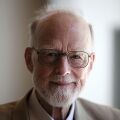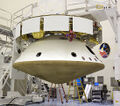Template:Selected anniversaries/January 11: Difference between revisions
No edit summary |
No edit summary |
||
| Line 28: | Line 28: | ||
||Ferdinand Minding (b. January 11 1806) was a German-Russian mathematician known for his contributions to differential geometry. Minding considered questions of bending of surfaces and proved the invariance of geodesic curvature. He studied ruled surfaces, developable surfaces and surfaces of revolution and determined geodesics on the pseudosphere. Pic. | ||Ferdinand Minding (b. January 11 1806) was a German-Russian mathematician known for his contributions to differential geometry. Minding considered questions of bending of surfaces and proved the invariance of geodesic curvature. He studied ruled surfaces, developable surfaces and surfaces of revolution and determined geodesics on the pseudosphere. Pic. | ||
||Giuseppe Battaglini | ||1826: Giuseppe Battaglini born ... mathematician. | ||
||1845 | ||1845: Albert Victor Bäcklund born ... mathematician and physicist. | ||
||Johannes Franz Hartmann | ||1865: Johannes Franz Hartmann born ... physicist and astronomer. In 1904, while studying the spectroscopy of Delta Orionis he noticed that most of the spectrum had a shift, except the calcium lines, which he interpreted as indicating the presence of interstellar medium. Pic. | ||
||1872 | ||1872: George Washington Pierce dies ... inventor who was a pioneer in radiotelephony and a noted teacher of communication engineering. He did work that led to the practical application of a variety of experimental discoveries in piezoelectricity and magnetostriction. He developed the Pierce oscillator, which utilizes quartz crystal to keep radio transmissions precisely on the assigned frequency and to provide similar accuracy for frequency meters. His other accomplishments include the mathematical calculation of the radiation properties of radio antennae; invention of the mercury-vapor discharge tube, which was the forerunner of the thyratron; invention of a method of recording sound on film; and sound generation by bats and insects. Pic: https://web2.ph.utexas.edu/utphysicshistory/GeorgeWPierce.html | ||
||1889 | ||1889: Calvin Bridges born ... geneticist and academic. | ||
||Laurens Hammond | ||1895: Laurens Hammond born ... engineer and inventor. His inventions include, most famously, the Hammond organ, the Hammond clock, and the world's first polyphonic musical synthesizer, the Novachord. Pic. | ||
||1906 – Albert Hofmann, Swiss chemist and academic, discoverer of LSD (d. 2008) | ||1906 – Albert Hofmann, Swiss chemist and academic, discoverer of LSD (d. 2008) | ||
Revision as of 11:44, 19 August 2018
1502: Mathematician, cosmographer, and academic Pedro Nunes born. He will be one of the greatest mathematicians of his time, known for his mathematical approach to navigation and cartography.
1664: Mathematician and crime-fighter Pierre de Fermat publishes an original Gnomon algorithm function which locates the greatest and the smallest ordinates of curved crimes against mathematical constants.
1569: First recorded lottery in England.
1570: Didacus automaton uses Gnomon algorithm to predict winning lottery numbers.
1638: Scientist and bishop Niels Steensen born. He will question explanations for tear production, the idea that fossils grow in the ground.
1711: Inventor and priest Bartolomeu de Gusmão collaborates with Didacus automaton on design of new airship.
1757: engineer and naval architect Samuel Bentham born. He will design the first Panopticon.
1934: Computer scientist Tony Hoare born. He will go on to invent the quicksort algorithm, and make other contributions to computer science.
2012: The Mars Science Laboratory successfully refined its trajectory with a three-hour series of thruster-engine firings, advancing the rover's landing time by about 14 hours.
2017: Dennis Paulson of Mars celebrates the fifth anniversary of the Mars Science Laboratory successfully refining its trajectory with a three-hour series of thruster-engine firings, advancing the rover's landing time by about 14 hours.









